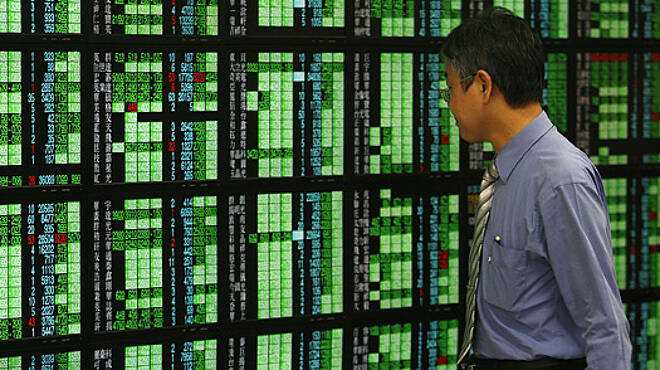Advertisement
Advertisement
Nothing like a good old dose of Fiscal Stimulus to rev up the Markets Risk Engines
By:
Positive trade headlines and potential fiscal stimulus provided much-needed relief for investors who have been spooked by recessionary cheerleading and toppling bond yields. However, Boston Fed President Rosengren threw a small glass ice water on the risk market rally dubbing the fall in equities since the July FOMC meeting as "not very big”.
In the context of the past market meltdown, that statement is factually correct, and his comments suggest that the Fed will fall short of being “surprisingly dovish” at the next FOMC.
But that is not to suggest the Fed would not start to wear their risk management hat if stock markets continued to tumble, it’s just we should not expect a significant policy pivot to occur this Friday at Jackson Hole.
Oil markets
Oil prices ripped higher after the U.S. administration will extend exemptions for customers of the Chinese telecom giant Huawei for another 90 days, which sets a very comforting tone ahead of next months US-China trade talks.
The US-China trade spat has been at the centre of the oil market demise, which has sent the global economy to the brink of recession and negatively impacted oil demand forecasts.
Cleary, the latest market rout, driven by the U.S. yield curve inversion, has left a negative impression on the U.S. administration. Not only has the President reached out to big business and the heads of U.S. banks but his willingness to extend the Huawei olive branch suggest the U.S. might also be willing to concede some elements in their uncompromising trade stance.
While it’s unlikely next months trade discussion will pull a trade deal out of the hat. But even a return to the fragile state of post-G-20( Japan) trade war neutrality combined with a sturdy central bank backstop could provide a significant springboard for oil prices.
Indeed that’s what happened overnight as speculators went on risk on stampede as oil futures jumped 2.4% to top $56 a barrel.
All the while middle east tension continues to simmer and boil, but given the lukewarm buy-ins to middle eastern risk premiums recently, this current rally is shaping up to be more about optimism on US-China trade than a heightened awareness of supply risks.
Gold markets
Gold ceded ground on pre-Jackson Hole /US-China trade discussion position squaring and as Global equities rallied. But the prospects for further central bank interest rate cuts have kept the sell-off contained well above significant resistance at $1480.
Gold prices eased around 1% on Monday, dropping below the key USD1,500/oz level. Asian equity markets received a shot in the arm from China’s interest rate reform, which went a long way to stabilise regional sentiment and weighed on gold. But a recovery in investor risk appetite on a general tempering of aggressive trade war posturing, undercut gold prices. The bounce in the US and global equity markets while not large but after last weeks roller coaster risk-off ride it was a convincing enough signal for investors to take some arguably extended ‘Long Gold” position risk off the table.
While equity markets rallied, the USD has traded well with US yields pushing higher as US recessionary fear recedes after a run of relatively stable US economic data.
Higher equities fused with firmer yields and a stable USD created a climate that virtually suffocated haven demand.
But it is the massive weight of negative-yielding sovereign bonds which has intensified the prospects of fiscal stimulus from larger developed economies, which has weighed on Gold.
The massive demand for sovereign bonds globally raised the prospects of fiscal stimulus from large economies, which is underpinning equities market while simultaneously depressing Gold demand.
A melding of fiscal and monetary policies is a far more pragmatic approach, especially in Europe where the markets will end up financing debt spending due to negative-yielding bond rates. And is free from the political melodrama and currency war mongering that QE evokes and further depressed demand for gold
The Malaysian Ringgit
Although trading from a defensive posture against the backdrop of a stronger USD the Ringgit continues to perform well on the back of the positive 2 Q GDP print, FX liberalisation by the BNM and interest rate reform in China.
The willingness of the BNM to put through even baby stepped FX reforms indicates a desire to open the market and meets the minimal FTSE Russel requirement and lessens the chances of Malaysia bonds getting pulled from the index.
Changes to the PBoC’s loan prime rate (LPR) have opened the door for potential rate cuts and should immediately offer up a reprieve to Chinese companies. Reforms of the PBoC’s loan prime rate (LPR) have opened the door for potential rate cuts and should immediately offer up a reprieve to Chinese companies.
While the rise in oil prices overnight and the general positive risk-on vibe should see the Ringgit trade on a neutral to stronger bias
This article was written by Stephen Innes, Managing Partner at VM markets LLC
About the Author
Stephen Innescontributor
With more than 25 years of experience, Stephen Innes has a deep-seated knowledge of G10 and Asian currency markets as well as precious metal and oil markets.
Advertisement
